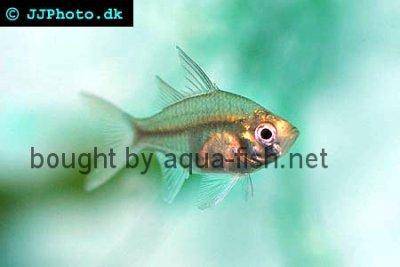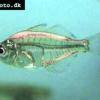Sailfin glass perchlet - Ambassis agrammus
Scientific name: Ambassis agrammus
Common name: Sailfin glass perchlet
Family: Ambassidae
Usual size in fish tanks: 7 - 8 cm (2.76 - 3.15 inch)
014
Recommended pH range: 6.5 - 7.1
Recommended water hardness: 4 - 13°N (71.43 - 232.14ppm)
0°C 32°F30°C 86°F
Recommended temperature range: 22 - 27 °C (71.6 - 80.6°F)
The way how these fish reproduce: Spawning
Where the species comes from: Oceania
Temperament to its own species: peaceful
Temperament toward other fish species: peaceful
Usual place in the tank: Top levels
Food and feeding
Sailfin Glass Perchlets can be picky eaters, but they will gradually accept flake or granule food with time. To start, offer them live or frozen foods like brine shrimp, daphnia, and bloodworms, which they tend to prefer. Even after they begin accepting dry foods, it's important to continue providing high-protein, meaty foods as part of their regular diet to ensure proper nutrition and maintain their health.
Origin
Native to Oceania, the Sailfin Glass Perchlet (Ambassis agrammus) can be found primarily in freshwater habitats in Northern Australia, particularly in the Northern Territory and Queensland. These regions offer the slow-moving waters and shaded areas that these fish favor in the wild.
Sexing
Sexing these fish is challenging, as there are few visual differences between males and females. However, it is generally believed that females have slightly rounder, fuller bodies compared to males, particularly during the breeding season.
Breeding
There have been no confirmed reports of successful breeding of Sailfin Glass Perchlets in home aquariums. In the wild, they are egg scatterers, releasing their eggs over several nights. The eggs are fertilized externally and left to develop without parental care. This behavior is difficult to replicate in captivity, making breeding in tanks rare.
Lifespan
With optimal care, the expected lifespan of the Sailfin Glass Perchlet is between 3 to 5 years.
Short description
The Sailfin Glass Perchlet is a peaceful species that thrives in small groups of at least five individuals. They do best in a well-planted tank with plenty of hiding places, which mimics their natural habitat. While generally calm, they are sensitive to water quality, so regular water changes are crucial. It's important to maintain high water quality to keep them healthy and stress-free.
Picture
Bought by aqua-fish.net from jjphoto.dk.


 Sepik
Sepik  Giant
Giant  Indian
Indian